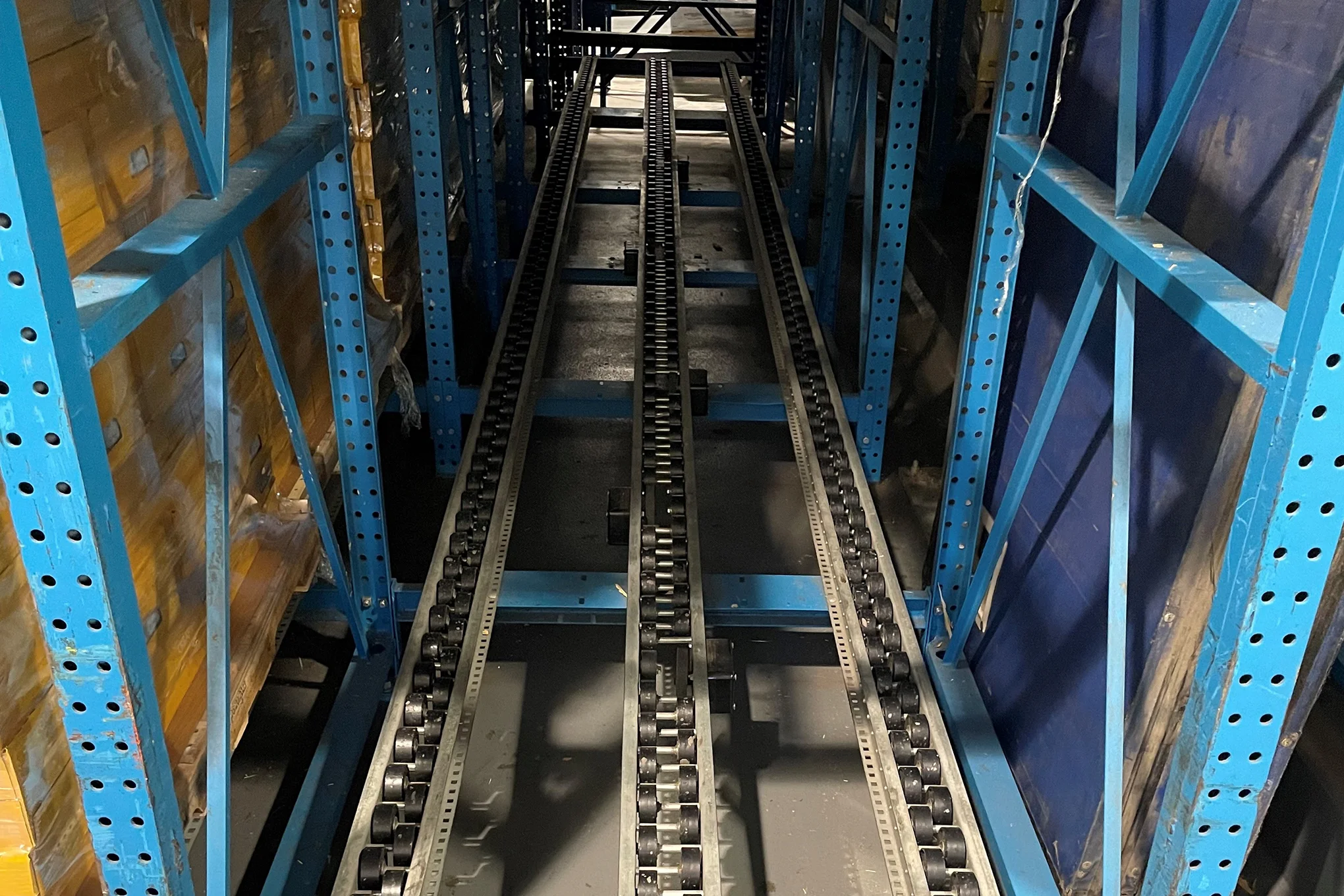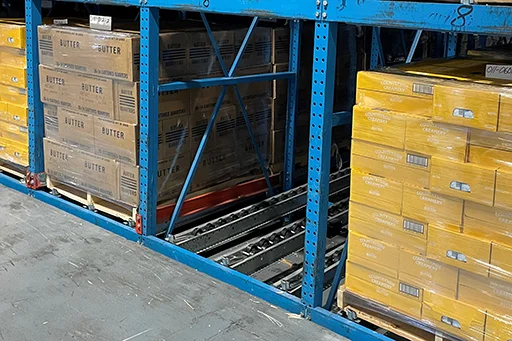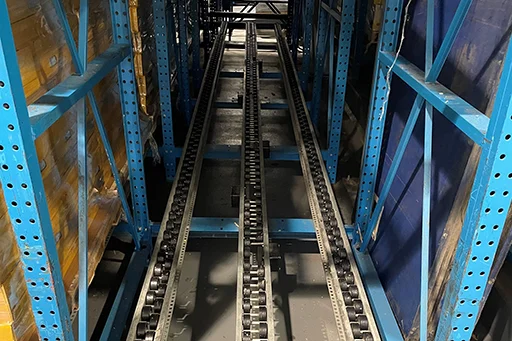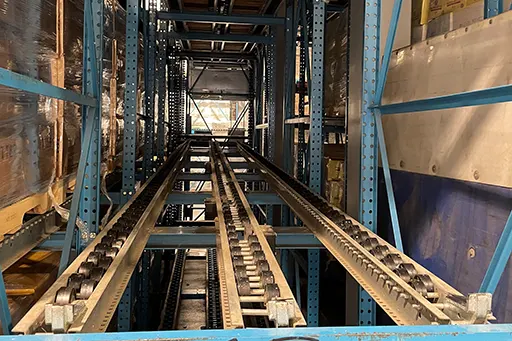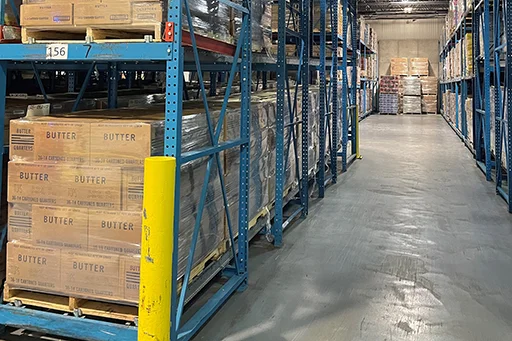Pallet Flow Rack Overview
The pallet flow through racking design incorporates a rack structure with roller tracks to form a gravity flow lane. The tracks are set with a decline pitch which allows pallets to move by gravity from the in feed side (rear) to the pick side (front). Dynamic brakes are installed within the track system to control the speed and assist in tracking of the pallets for safe handling. Lane capacity can be designed from 2 to 20 or more pallets deep, limited by building space, maximizing storage density.
This gravity feed pallet rack provides FIFO (First In, First Out) inventory control and is preferred for products requiring stock rotation of time sensitive or perishable goods. Every pallet facing on each level can be a different SKU offering accessibility to each product. Pallet flow can be utilized to handle pallet loads or in high volume case pick operations to minimize restocking efforts.


